GOP says Democrats diluted oilfield votes in first day of New Mexico gerrymandering trial
New Mexico Gov. Michelle Lujan Grisham and Lt. Gov. Howie Morales were dismissed as parties from a gerrymandering lawsuit during the first day of its bench trial, Wednesday in Lea County District Court, in which Republicans argued Democrat leadership purposefully diluted the GOP’s votes in redrawing the state’s second congressional district.
The dismissals were ordered by the New Mexico Supreme Court hours into the first day of the trial held in Lovington, leaving just lawmakers participating in the redistricting process and Secretary of the State Maggie Toulouse Oliver as defendants.
As the trial started, Republicans began building their case that New Mexico Democrats purposefully redrew the state’s congressional districts to maintain control of its three seats in the U.S. House of Representatives, calling several lawmakers to testify to the process.
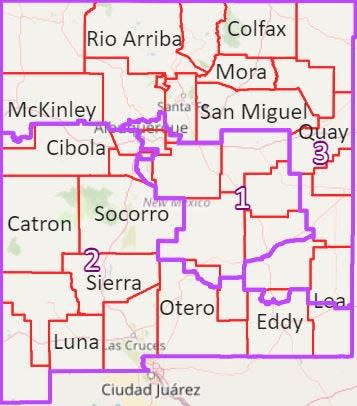
More: New Mexico gerrymandering trial starts this week. Here's what to know about the case.
The conflict arose over the 2021 redistricting of New Mexico congressional boundaries in response to the 2020 Census, that left the southern Second Congressional District, normally a Republican stronghold, now including portions of left-leaning urban areas around Albuquerque.
This was followed by Democrat Gabe Vasquez defeating incumbent Republican Yvette Herrell for her seat in the U.S. House of Representatives by a narrow margin of about 1,300 votes in the 2022 election.
During the first day of the trial, the GOP said Democrat State leadership purposefully shifted the boundaries to swing District 2, after the court responded to motions attempting to preclude lawmakers from testifying.
More: 'Gerrymandering' lawsuit against New Mexico Democrats delayed ahead of trial
The case was expected to continue until Friday with a final verdict issued by presiding Ninth Judicial District Judge Fred Van Soelen, ahead of an early October deadline set by the New Mexico Supreme Court for a resolution.
Here’s what happened on the first day of the trial.
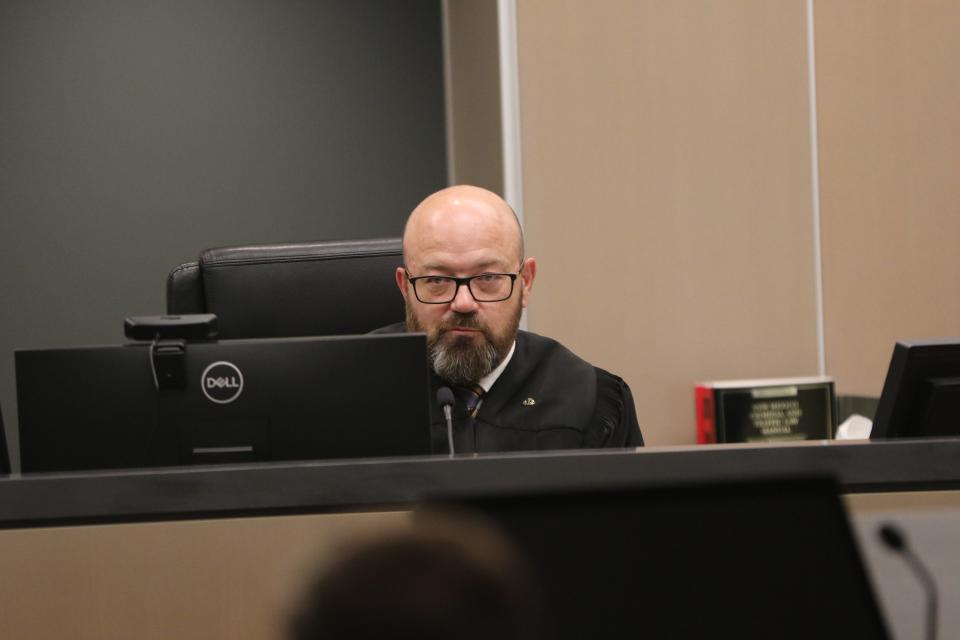
Lujan Grisham, Morales dismissed from case hours into trial
After opening statements were made and New Mexico Rep. Jim Townsend (R-54) and Sen. William Sharer (R-1) testified, the Supreme Court issued a writ ordering the district court to dismiss Lujan Grisham and Morales as defendants.
Another a ruling by the New Mexico Supreme Court denied a motion by attorneys for the lawmakers on trial to exclude statements made during the legislative process on the basis of “legislative immunity.”
Toulouse Oliver, Senate Majority Leader Mimi Stewart and former Speaker of the House Brian Egolf, all Democrats, remained as defendants.
More: New Mexico GOP's 'gerrymandering' case will proceed after Democrat arguments rejected
GOP says text messages show plan to dilute votes
In his opening statement GOP attorney Misha Tseytlin contended the Democratic Party purposefully intended to alter congressional districts to maintain that party’s power.
He pointed to texts from Stewart to staff members that Tseytlin argued showed her intention to make each of three districts more than 50 percent Democrat.
More: Gabe Vasquez wins race for New Mexico's 2nd congressional district
“This is a perfect gerrymander," he said. "Democrats have a clear advantage. This was completely behind closed doors. They tried to spin it and say they were making it more competitive. If that’s really what they were trying to do, why not make one or two districts 50-50?”
Defense attorney Rich Olson responded that the 2022 election was close, with Vasquez winning by less than a percentage, and that some partisan gerrymandering was permissible by law as long as it was not “egregious” or predetermined an election’s result.
He said the Second District was maintained within “the range of competition” when the new lines were drawn.
“There’s no entrenchment. There’s no predetermination of an election,” he said. “The stray comments by a few legislators are not relevant and do not prove legislative intent.”
More: Redistricting complete in New Mexico after Gov. Lujan Grisham approves senate map changes
Redrawn district lines ‘cracking the oilfield?’
Townsend said from the witness stand that the new districts were problematic especially for the southeast region, known for heavy oil and gas operations in the Permian Basin.
The new map shifted borders so that Artesia, about 40 minutes north of Carlsbad was moved from District 2 into District 3, along with the north half of Lea County including Lovington.
Townsend argued moving these oilfield towns into the Third District, which they now shared with northern New Mexico counties, meant oilfield interests were diluted in Congress.
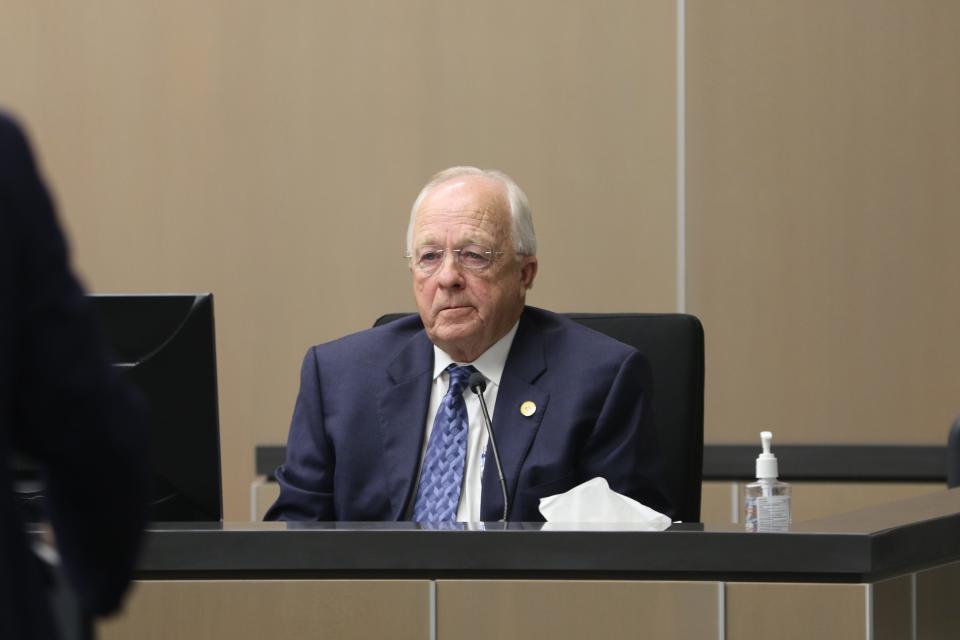
This was because, he said, the fossil fuel industry would have two congresspeople weighing those interests against others in counties that did not have any oil and gas.
He said the previous map allowed one congressperson to focus almost exclusively on the industry, which Townsend argued was the lead economic driver of the state.
“I think it is a common thought the being united and having an aggregate-group that can influence their legislator is a benefit,” Townsend said. “I can’t think of any oil company that thought splitting them up was in their best interest.”
More: SENM Senators say rural New Mexico shutout in redistricting
Sen. David Gallegos (R-41) of Eunice in Lea County testified the new map marked a purposeful effort to impact southeast New Mexico’s vote by “lumping” the region in with urban areas around Albuquerque in District 2.
He said the new maps meant voters were “less apt” to elect any Republican candidate in the future.
The newly-draw Second Congressional District maintained the Las Cruces urban and border area in southwest New Mexico but added the southern tip of Bernalillo County which Gallegos argued had very little in common with the state's southeast corner.
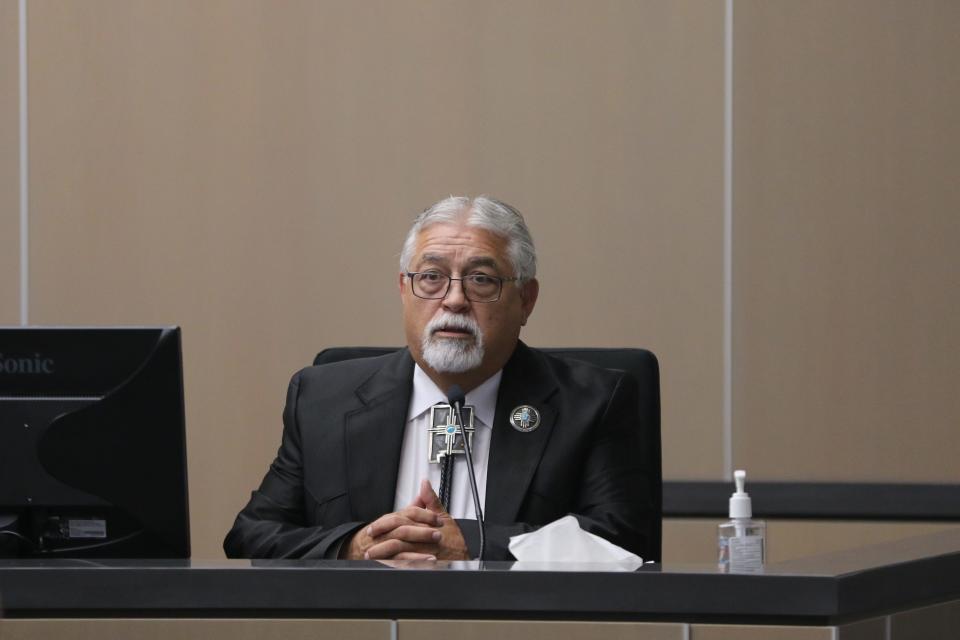
“I have a hard time with the current map just because of the division it caused in Lea County,” Gallegos said. “We just don’t have that much in common with Las Vegas, New Mexico. Now we have two congressmen. It makes it harder for them.”
More: City of Carlsbad and Eddy County raise concerns over redistricting maps
Republicans say they were denied input in New Mexico redistricting process
Townsend, Gallegos and Sharer testified their party, the minority in the New Mexico Legislature, was largely excluded from the decision-making process that created the new districts.
This argument centered on amendments made to Senate Bill 1 during the 2021 redistricting special session, which resulted in a committee substitute the legislature ultimately passed.
“That occurred basically overnight,” Townsend said. “We were not involved in that at all. We were not able to interject any amendments. Those were party line votes. It was pretty clear to us that the bill was going to be forced through as it was.”
Sharer said GOP-led amendments were tabled during the session, sometimes within minutes. He also said he was wrongly excluded from discussion between Democrats and the Navajo Nation, as Sharer said his district was 30 percent Navajo.
“If there were any meetings, there certainly weren’t Republicans in them,” he said.
Gallegos echoed the concern that the new maps were “forced on us (the GOP) and we had to live with the consequences.”
Defense argued statements privileged under ‘legislative immunity’
The trial began as Ninth Judicial District Judge Fred Van Soelen denied a motion from the defendants for an emergency stay that would have excluded defendant lawmakers from the proceeding, as the Supreme Court considered how legislative immunity applied to the case, ruling later in the day.
Attorney for the lawmakers Sarah Sanchez argued the issue was not only about “admissibility” but also about maintaining privileged information, and that the case needed guidance from the Supreme Court to avoid harmful releases of information.
“Once privileged information has been disclosed, it’s out of the bag," she said. “There’s no getting it back. That’s why it’s important that he have guidance ahead of time.”
Sanchez argued legislative immunity precluded lawmakers, staff and consultants from testifying in court as to their decision-making process, in response to a string of subpoenas filed by the plaintiffs to compel them to testify.
New Mexico redistricting simulations debated
Sean Trende, a political analyst with Real Clear Politics was called to testify by the plaintiffs as to his work in producing simulated district maps for New Mexico's process, and a report he issued in August that argued the districts were changed to favor Democrats via "extreme" gerrymandering.
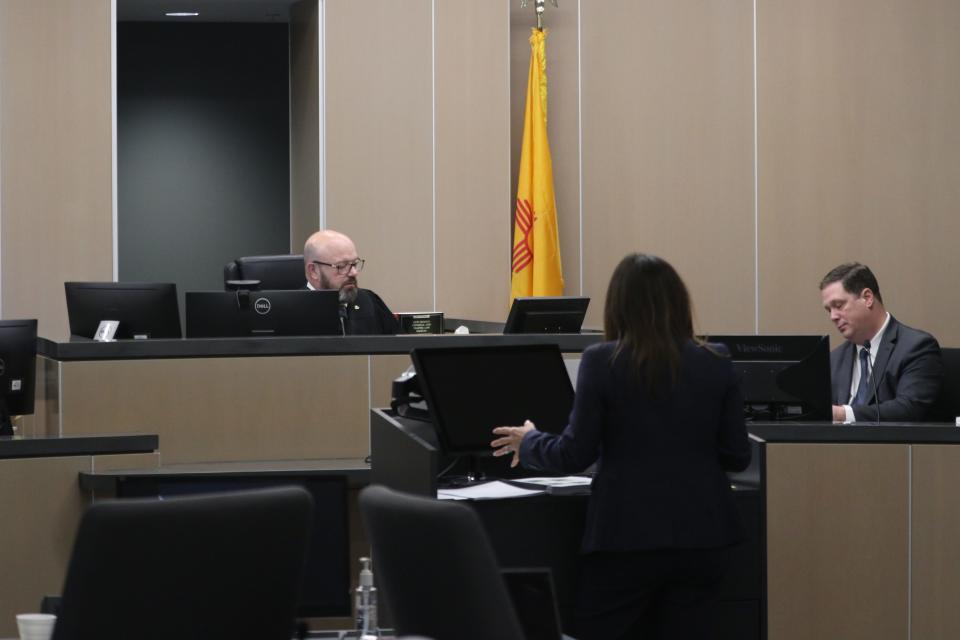
Attorneys for the GOP argued Trende was an expert in his field, and his report was viable in court, while the defense contended that since the more than 2 million maps generated by the simulation weren't saved for the court's review, his opinion should be excluded from evidence.
Trende testified that this was a normal practice in his field, and that the maps did allow him to form his opinion and write the report in question.
Van Soelen ruled in favor of the plaintiffs and allowed Trende to testify about his findings, which he said showed southeast New Mexico was the "foundation of Republican voting in New Mexico."
"If you wanted to crack the Republican vote, that's where you'd do it," Trende said.
What’s next?
The bench trial will continue Thursday and Friday when a verdict is likely from Van Soelen.
As a bench trial, the decision rests solely with the judge and a jury is not present or part of any decision-making.
Other lawmakers could be called to testify as the defenses’ witness list include 119 named witnesses, mostly state lawmakers, now excluding Lujan Grisham and Morales.
Adrian Hedden can be reached at 575-628-5516, achedden@currentargus.com or @AdrianHedden on X, formerly known as Twitter.
This article originally appeared on Carlsbad Current-Argus: NM CD2 gerrymandering trial underway

